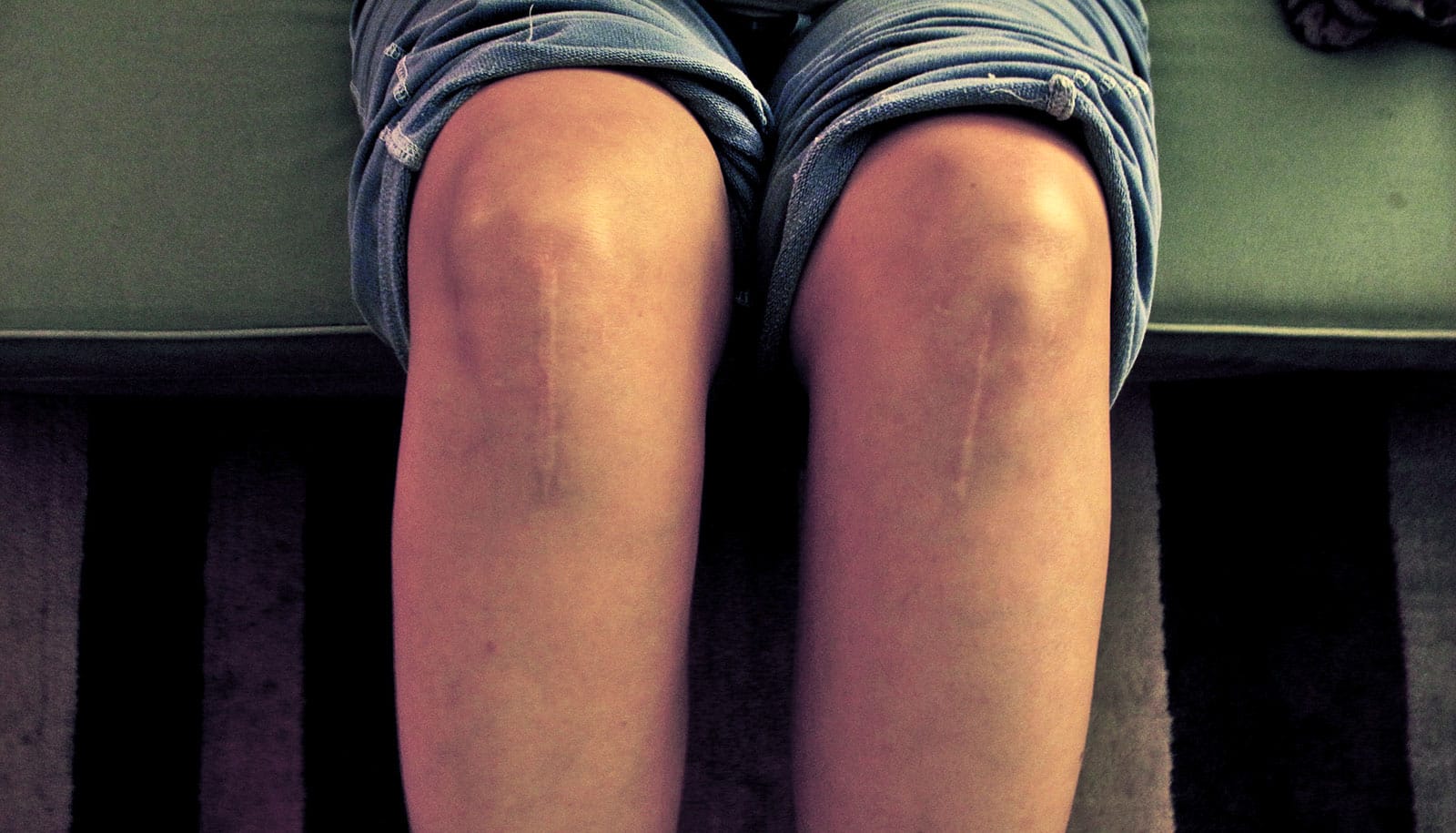To repair a torn meniscus in the knee, scientists have tried developing scaffolds from plastics and textiles. Now, a more organic model shows promise in the lab.
About a million times a year, Americans with a torn meniscus in their knee undergo surgery in hopes of a repair. Surgeons can’t fix certain tears and others won’t heal well. Many patients later suffer osteoarthritis from the injury.
As described in Scientific Reports, a scaffold derived from a pig’s meniscus performed better in lab tests than healing without a scaffold.
“A partial meniscus removal is one of the most commonly performed orthopedic surgeries in the US,” says senior author Amy McNulty, an assistant professor of orthopedic surgery at Duke University.
“The damaged tissue must be cut out because it’s causing pain or catching, but when the tissue comes out it also alters load-bearing in the knee and often leads to osteoarthritis, so it would be beneficial to try and heal the meniscus in place using a tool like a scaffold,” McNulty says.
In lab tests, use of a scaffold resulted in a stronger meniscus repair after four weeks compared to a meniscus that went through the natural healing process.
A scaffold could be especially valuable when the meniscus tears near the inside of the crescent-shaped tissue where blood doesn’t flow. Without a blood supply, a tear in this section won’t mend and the tissue often needs removal, McNulty says.
The pig-derived scaffold is advantageous over other models including synthetics, because it doesn’t use chemicals or enzymes for processing, which helps it retain more natural properties, McNulty says. Also, the structure is more porous than other models and even regular meniscus tissue, which allows new cells to move into it more easily to integrate with damaged tissue.
“Cells from the native tissue appear to be naturally attracted to the scaffold—they want to move into it,” McNulty says. “Hopefully, this will lead one day to a scaffold being placed into different tears to augment healing and seamlessly integrate the pieces of damaged tissue.”
The next step is testing the scaffold in animal models and eventually in humans, she says.
Additional authors are from Duke. The National Institutes of Health, the Arthritis Foundation, a US Department of Veterans Affairs Rehabilitation Research Service Merit Review Award, the Lord Foundation, and the Musculoskeletal Transplant Foundation funded the work.
Source: Duke University

